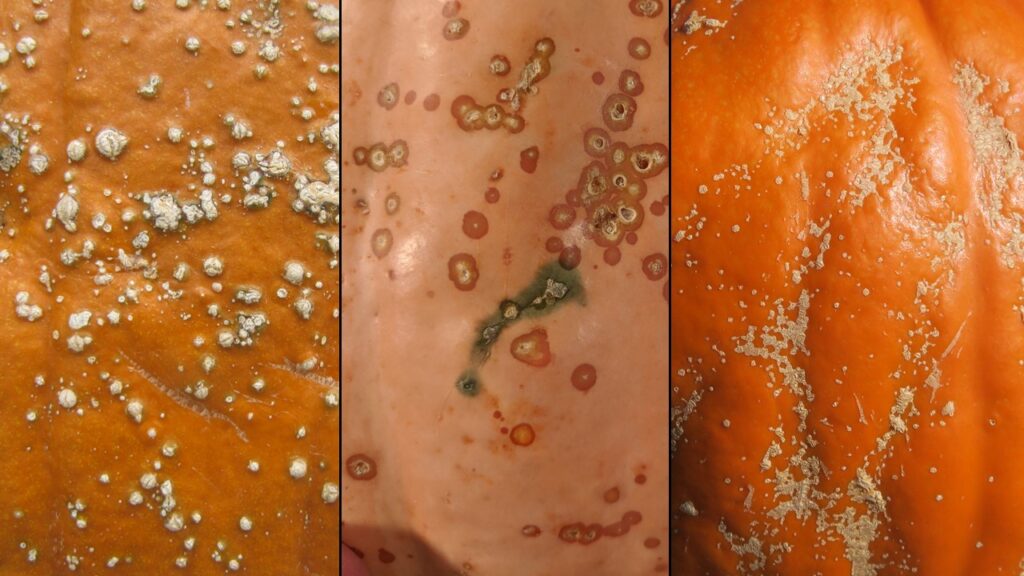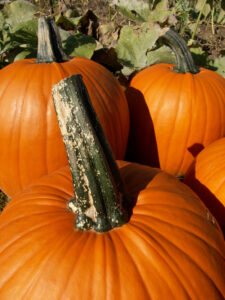Recently, I have observed several pumpkin vines and fruit with Plectosporium blight. When I receive phone calls about Plectosporium blight, the caller often has trouble describing the disease. Indeed, the disease is difficult to describe. Therefore, I will include several photos with this article.
Lesions of Plectosporium blight are most often observed on the stems of affected plants. The lesions are small and irregularly shaped. The lesions often coalesce to form a scabby area (Figure 1). When the handle of the pumpkin is affected, the marketability of the pumpkin is affected. In severe cases, the pumpkin itself may have lesions of Plectosporium blight. Lesions on the leaves are often on the midrib and major veins and may be diamond shaped as on the stem. When lesions occur on the leaf surface, the lesions are small and speck like. Plectosporium blight lesions on fruit may be confused with bacterial spot or edema (Figure 2). Edema is a non-infectious disorder caused by too much moisture, bacterial spot is caused by a bacterium and Plectosporium blight is caused by a fungus.

Figure 2. A comparison between symptoms of edema (left), bacterial spot (middle) and Plectosporium blight (right) on pumpkin.
Cucumbers and melon are generally considered to be resistant to Plectosporium blight. I have never observed the disease on watermelon in Indiana.
The biology and epidemiology of Plectosporium blight is not well understood. It is thought that the fungus survives in the soil and/or in crop debris for 3 years. Cool, wet weather is thought to favor disease development; however, the disease has become established in Florida during warm weather. Conidia are easily splashed from lesions with rain or irrigation water. P. cucumerina may be associated with a range of hosts which may influence the survival of the pathogen between cucurbit crops.
Crop rotation should be practiced for at least 3 years to lessen the amount of inoculum in the soil. However, P. cucumerina may affect a range of hosts as noted above. Any cultural technique that aids ventilation and drying of leaf surfaces, such as orienting rows with the prevailing wind or manipulating plant spacing should help to lessen disease severity. Crops should be scouted for symptoms and, when appropriate, fungicides should be applied.
Plectosporium blight is said to be readily controlled by fungicides. However, anecdotal accounts report management failures with fungicides. Such failures, if confirmed, may be due to fungicide application problems, fungicide resistance or simply a lack of knowledge regarding the biology of P. cucumerina. This pumpkin fungicide schedule lists the systemic fungicides Cabrio®, Flint Extra® , Merivon® and Quadris®/Satori®.
Host resistance to Plectosporium blight does not exist in Cucurbita spp. However, some varieties and plant introductions vary in susceptibility.
